
by Michele | Aug 7, 2013 | Preparation Stage

Don’t know what kind of moth this is? We didn’t either until we looked it up!
Dan and I like to be thoroughly well prepared for big changes and new possibilities in life. When we have a problem, we search Google and figure out how to fix it. When I was pregnant with Carter, I spent hours researching online exactly what to expect and prepare for multiple different outcomes to the point that my doctors were always surprised that I knew exactly what they were talking about and had almost no questions at any of my appointments. Dan visited countless websites and forums along with talking to other landlords before we were confident that we could make well informed decisions about buying rental properties. What can I say? We like to be educated.
Recently, we realized that we had been somewhat slacking in the cruising education division. Sure, we read a lot of other people’s blogs and had spent a lot of time reading cruisersforum and other boating sites when we were first making up our plans, but we hadn’t done a lot of in depth training because we were so focused on the financials of making sure we could get going. That mindset has been able to shift over the last few weeks… We have now reached the point where our rental reserves (six months of expenses per house) and the initial cruising kitty (10k to start, but it will be replenished each month from our various income sources while cruising… think of it as working cash) are established. Now we move into the boat savings stage. It is exhilarating to know that every dollar saved will be building towards a new home. That might not seem like a big deal, but for us it has been a major eye opener. Now we need to make sure that we are ready when the money is!
To start things out right we purchased the full pack of NauticEd* Captain’s courses and have both been working through them together. These courses cover a huge range of topics from diesel engine maintenance and proper sail trim to safety at sea and storm tactics. We have been very impressed with the quality of instruction and depth of information provided from these courses and both of us feel a lot more confident that we will be able to sail our boat safely when the time comes. They even have nice PDF graphs and quick reference guides to laminate and keep on your boat with you as well as practical exercises that we’ll be able to work on together once we get our real boat.
Another course that we are planning to take is the Mahina Expedition seminar that is given at Strictly Sail every year. This seminar is highly rated and addresses a lot of the logistical issues of living on a sailboat. Provisioning, safety, clearing in and out of countries, and having pets on-board are just a few of the topics covered in the all day seminar. The Blue Water Boats list that we’ve been referencing in many of our posts is also created by the Mahina team. These people have a lot of experience under their belts and we’re hoping to take some of that and put it to use on our own journey.
Two other big areas of focus for our studies will be first aid skills and Dan’s SCUBA instructor course. We feel that Dan getting his instructor certification could be a major benefit to us in the future and could potentially give us some additional income throughout the year. The first aid classes we are a little less sure about where to start. Dan is currently EFR/CPR certified as part of his rescue diver certification last year and plans to get his EFR instructor certification at the same time he finishes the PADI instructor certification, which would make it easy for me to get EFR certified as well (which we plan to do.) However as anyone who has taken EFR or the Red Cross first aid class will know, these classes are designed to stabilize a patient until an ambulance or other trained medical staff can reach the patient which usually only takes a short time in comparison to the days it could take if someone was seriously injured at sea. We are currently trying to find other options that would give us a more thorough training, but are having a hard time finding something reasonably priced that we could both be trained in. The most promising so far has been the Wilderness First Response program but that is about $800/person and requires a week of hands-on training so we aren’t sure if we want to jump into that without more … research.
Do you know of any other classes we should consider taking in the next year of preparation? We’d love to hear from you! Leave a comment or shoot us an email from the Contact Us page.
*Use our coupon code followthehorizon at NauticEd to get $15 off any classes! (Full disclosure: we get a very small credit to our NauticEd account when you use this code)
We’ve also done some major updates to our To-Do List page! Click on over to check it out.
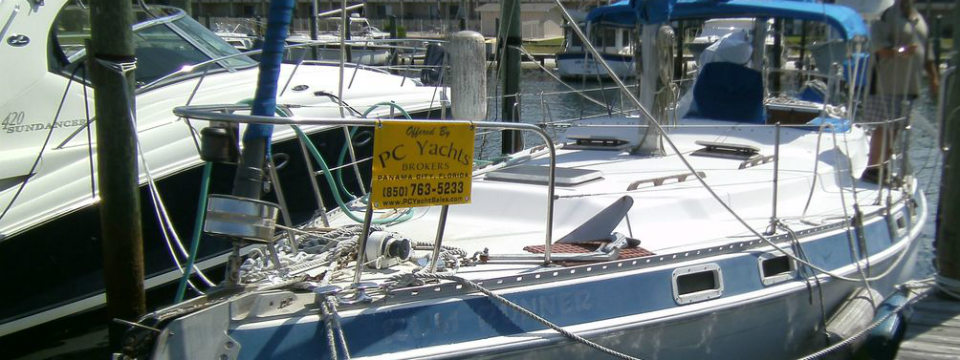
by Michele | Jun 27, 2013 | Preparation Stage
While we were in Panama City we decided we should take a look at a few boats that were potential candidates for us in the future. Most likely none of these exact boats will still be on the market in a year from now but it was important for us to get an idea of what condition boats were actually in that would be in our price range. It’s one thing to tour beautiful, brand-new boats at a yacht show and something else entirely to get a look at what we could realistically expect for $50,000 or less. We were a little apprehensive before going in though cautiously optimistic due to the amount of research we’ve already put in.
First up was the Morgan 41 Out Island. We have seen a lot of these on the cruiser’s forums as recommended family liveaboards (though it didn’t make the Mahina list). It has two good-sized staterooms and a nice big settee as well, so I can certainly understand why families with kids would like it so much. The center cockpit was also large and spacious and would certainly make a great space for entertaining. There was a lot of storage space throughout the cabins and the extra living space in the aft master stateroom would make for a relaxing retreat.
There were only a few negatives (in our opinion, they might not be for others) that we noticed about the boat. First, we aren’t very big fans of having 2 heads aka bathrooms on a boat. That might not seem like a problem, but we figure it’s wasted storage space and more hassle to deal with. Also, the walk-through hallway is pretty darn tight, as in Dan and I could not pass each other at all and we aren’t very big people. There is plenty of cabinet storage but I have a feeling that it would be somewhat cumbersome to use with how narrow the hallway is and it would be especially tight trying to work on the engine which is also accessed there. Overall, the Out Island was a very nice boat and one we wouldn’t be disappointed with, but we just weren’t really feeling it. (This particular one at least. The Out Island can be found in many different layouts and every boat is different.)
The next boat that we saw was a Cape Dory 33. To be honest, we really should have looked at this one before the Out Island instead of after. We came away feeling like it was just too small for us which was compounded by the fact that this specimen wasn’t very well cared for and had a lot of junk piled inside of it. I think even a nice one would probably be too tight of a squeeze for 3 people, but it could make a good cozy boat for a couple. The galley area was actually more spacious on the Cape Dory than the Out Island with more working counter space, but that’s about the only thing that was bigger. One of the most pressing issues that I would have living in this boat is not just the living space but the non-existent storage space. I don’t think that our SCUBA equipment would be able to find a home on this little boat and therefore neither would we!
Luckily, the next two boats we toured were ones that we would be thrilled to pick up when the time comes but we will save those for next time!

by Michele | Apr 24, 2013 | Preparation Stage

A financial safety net is just as important as a physical one.
Whenever we are dealing with finances Dan and I like to plan for a pretty decent margin of error. (Dan would appreciate it if I would practice this a little more in dealing with scheduling as well; I am consistently 5 minutes late.) If you could listen in to some of our mini-planning sessions we frequently have, you would hear the phrase “worst case scenario” at the beginning of most of them. We figure that if we plan for the worst case – within reason of course, we aren’t going doomsday here- then we will be left with a much higher comfort level and safety net in times when we’re living on the other end of the spectrum.
The margin of error is especially important when we are talking about making a budget for a lifestyle that we have never lived before. Sure we think that we will be fine living on $1000-$1500 per month based on our research, but that’s all it is right now, research. It’s crucial for us to know that if that doesn’t end up being true we aren’t left high and dry (pun intended). The whole basis of this adventure is our desire for freedom but you can’t have freedom if you are constantly worried about how you are going to pay for the next time your engine needs a tune-up.
There are a couple of big ways that we are dealing with the margin. The first is in how we are planning out our rental income. Dan has created a spreadsheet that we use to evaluate any potential rental properties that we look at which takes into account all expenses (including property management costs at the highest rate we’ve seen in our area) and also vacancy rates of our tenants. We have separate columns for vacancy rates at 0%, 4%, 7%, and 11%. The current accepted vacancy rate in our area is a very low 2-3% but we use the 7% rate as the amount that we use for budgeting purposes. We hope this will give us a very safe expectation of income from our rentals even if the market worsens a bit before we leave. Hopefully we’ll continue filling vacancies within a week or two as we have done with our first 2 houses and also find a manager we like at a lower price, but if we don’t we are still fairly comfortable.
The second part of the plan is maximizing our income earning potential while cruising. Dan is currently a certified PADI Dive Master and plans to become a PADI Open Water and Specialty Instructor as soon as possible. Because PADI is recognized worldwide we are hoping that this will give us a nice back-up option if our income falls short of expenses. We also intend to log our sailing time once we start cruising to begin the process of getting Coast Guard Captain’s licenses (6-pack at least) which would allow us to complete deliveries and also increase Dan’s marketability as a SCUBA instructor who is licensed to carry divers himself. Finally, investment income on other savings and maybe some future swing trading as described in Live on the Margin in addition to some small income from this blog (yes we have recently added ads to the site) eventually could all add to a few hundred a month for extra flexibility.
Best Case Scenario: our costs will not overextend our rental income, we will have renters who stay for years at a time and financial stress will be a thing of the past in our new life. Worst Case Scenario: we have crappy renters who tear up our houses, our boat breaks down too often and Dan has to take up part-time work doing his favorite hobby. Sounds like a pretty nice life either way.
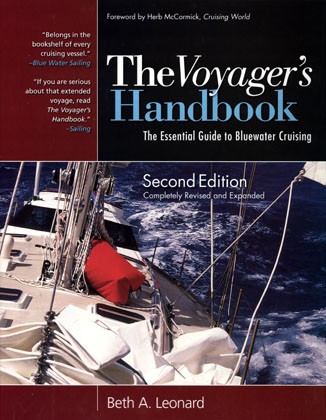
by Michele | Apr 17, 2013 | Preparation Stage
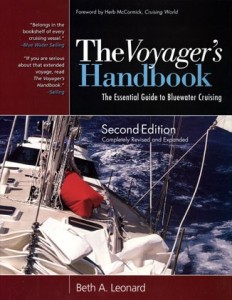
Everything you need to know about cruising is in here!
So far in our month of finance posts, we’ve gone over our savings goals and reducing our current spending. But of course all of this is meaningless unless we have a plan for how much we will be spending while we cruise. People have asked this question on every blog and every forum available to cruisers of all levels and with something as individual as personal spending it is a fairly difficult question to answer. The most common response is “it costs whatever you have” or “that’s the same thing as asking how much it costs to live on land…its all up to you.”
While I appreciate the idea behind the answer, I also think that there is a way to generalize expenses for people. I can tell you that it is possible to live on $750/month or less for a couple in my town if you rent or own a one bedroom shack, eat peanut butter sandwiches every day and don’t own a car or have other insurance. You could spend $2000/month living in a small 3 bedroom home, eating good meals at home, driving one car rarely and being otherwise frugal. Or you spend $5000/month on a nice home in a good neighborhood, drive expensive cars that get terrible gas mileage as much as you want, and eat out for every single meal to normal restaurants. I can’t tell you how much it would cost your family, but I can give you the basis to help you figure it out on your own.
That’s exactly what Beth Leonard has done in this fantastic article entitled “How Much Will Cruising Cost You?” and also in her book The Voyager’s Handbook. She details the spending habits of three fictional cruising families: the Simplicity’s in a 33 ft cutter, the Moderation’s in a 40 ft catamaran, and the Highlife’s in a 54 ft ketch. In my opinion, this is the best document on cruising budgets that I have found in any of my research, and is what Dan and I based many of our calculations on when trying to figure out how much we would need monthly and yearly to live at the level we desired. We believe that we can budget somewhere between the Simplicity spending of 8,000/year and the Moderation level of 20,000/year leaving at somewhere in the $1000-$1500 per month range. This budget was also verified by a seminar called Three Cruising Budgets given by George Day of Blue Water Sailing magazine at Strictly Sail Chicago this year.
Obviously, we don’t know for certain yet how much we will spend once we start sailing, but it is important for us to have some sense of direction to work with while planning. No one else will have the same budget as us (and certainly not one man on a forum that told us we would need at least $50,000/year…he and his wife spent $1500/month on food alone!) but we think that using a generalized picture has given us pretty realistic expectations. We’re always open for comments or suggestions, so leave one for us below!
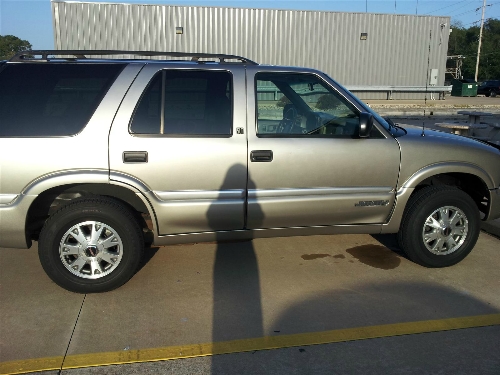
by Michele | Apr 12, 2013 | Preparation Stage

Sure it can eat through mud and snow…and your wallet.
Now that we’ve taken care of most of our “big-ticket” items to improve our savings, Dan and I are trying to tackle the smaller ways that we can find extra dollars in our budget. Not only is this important for increasing our savings to maximum levels but it also is helping to prepare us for living more frugally while cruising. If we want to have any kind of decent chance at living on $1000-$1500 a month than we have to get serious about knowing where each of our dollars goes and how to cut that down as much as possible.
The tracking part is made much easier by the online financial website that we use: Mint.com. We have all of our bank accounts, credit cards, loans, and investment accounts tied in so they automatically update whenever you long in. We’ve used this program for a few years and we’re pretty happy with it, though it can be a lengthy process to set everything up and figure out what budgets you want to set for yourself. Once you have been using it for a couple of months, it can really help to show you where your money is going every month. For some time now, it has been giving us a pretty clear indication that we have been spending too much in the Food and Gas departments, so we’ve finally decided to get those under control.
Food was first and it was somewhat daunting to me to be honest. Not to play the martyr working mom bit, but it is really hard to provide home cooked meals during a working week. There’s just not enough time to be able to figure out what to make every day and go pick things up from the store so I had to find a different approach. A couple of weeks ago I mentioned that we have purchased a subscription to 5meals1hour.com for five dollars a month. Well, we’ve completed the first months’ worth of recipes and I can honestly say that we are way ahead of where we were last month, but I can’t give all the credit to the menus. We only used about 1/3 of the recipes on the menus, but we have still been eating at home on average of 5 days a week, which is a huge deal for us. I think just the change in mindset about grocery shopping every two weeks for actual planned meals has been the biggest positive change that 5dinners1hour has made for us. We can still improve a lot in this area, especially because I’m not a very experienced grocery shopper yet so I think we’re paying too much for our groceries, but we’re seeing a definite change in attitude and habits.
Gas spending is our other cash hog. Like a lot of people we know, it’s just something that we haven’t taken seriously before. But looking at our accounts, we have spent almost $1300 in gas alone since February 1! That’s averaging $18.50 per day, yikes! Here are a few strategies we are implementing to help us cut down this silent killer.
- Drive less…obviously. Eating meals at home isn’t just saving us money in the food department, it means less driving too.
- Walk and Ride Bikes, and not just for leisure riding. Dan has started riding his bike to work most days and we are planning to use our bikes for trips to the grocery store, library, and other close to home errands.
- Get rid of the gas guzzler in the driveway. We’re still working on this one, but the goal is to eliminate one of our 15 mpg SUV’s for a 30+ mpg compact car. Even if we have to spend some money over the sale of our Jeep, we should get most of it back in the end when we sell it in a year. This one has the potential to save us in the realm of $250/month!
Hopefully, we’ll find some good success using these strategies and find others to help us keep our everyday spending in check. If you have any suggestions, let us know in the comments!




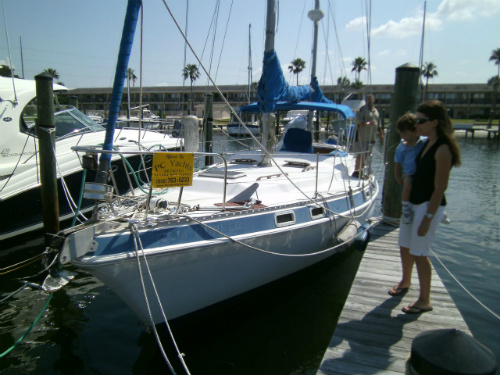
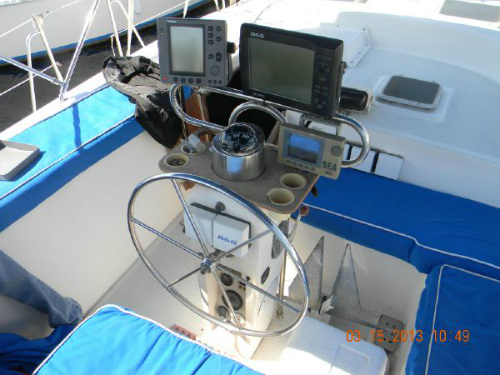
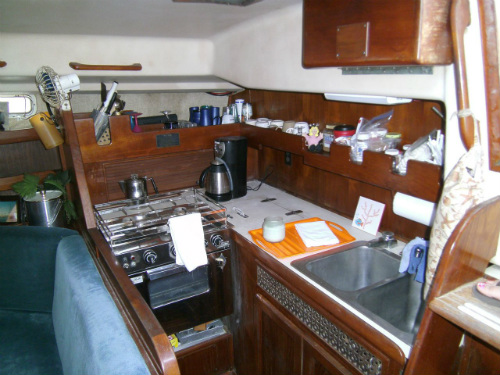
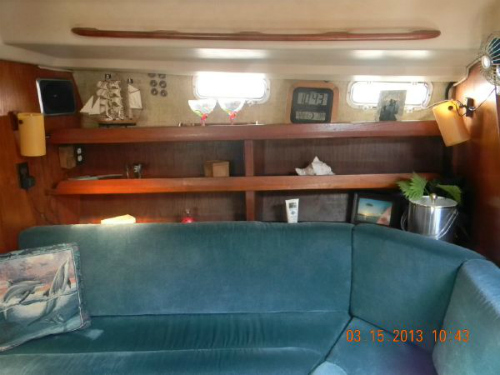
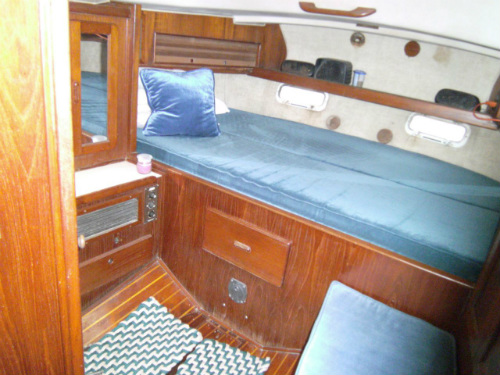
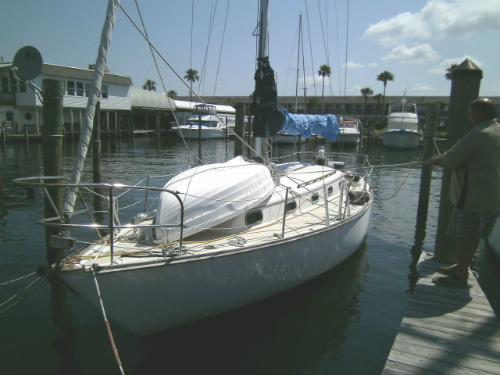
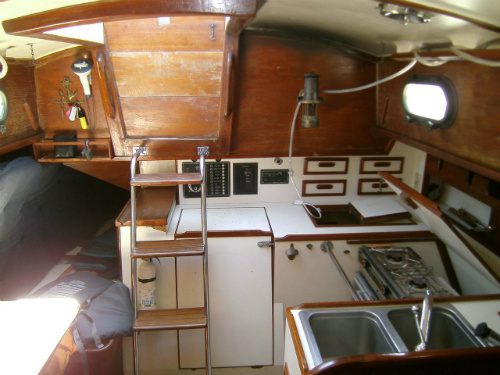
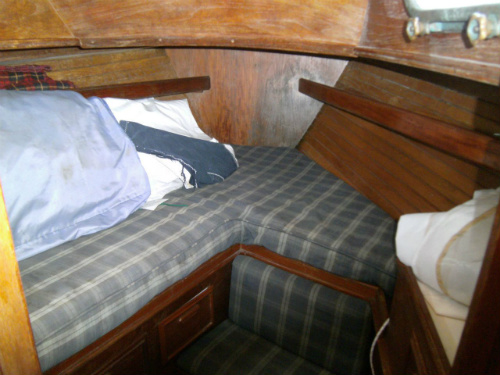






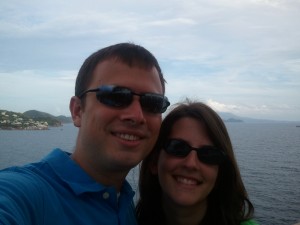 We are normal (well ok, not so normal) people that have a dream to see the world and live life as it was meant to be. We both have successful careers in the healthcare industry, even in this terrible economy. We want to break free of the current cycle of trading time for dollars and dollars for more and more things we don't need. So, we have decided to forego the fruits of our economic success and "retire" well before we are 30 and set out to see what is over the Horizon.
We are normal (well ok, not so normal) people that have a dream to see the world and live life as it was meant to be. We both have successful careers in the healthcare industry, even in this terrible economy. We want to break free of the current cycle of trading time for dollars and dollars for more and more things we don't need. So, we have decided to forego the fruits of our economic success and "retire" well before we are 30 and set out to see what is over the Horizon.